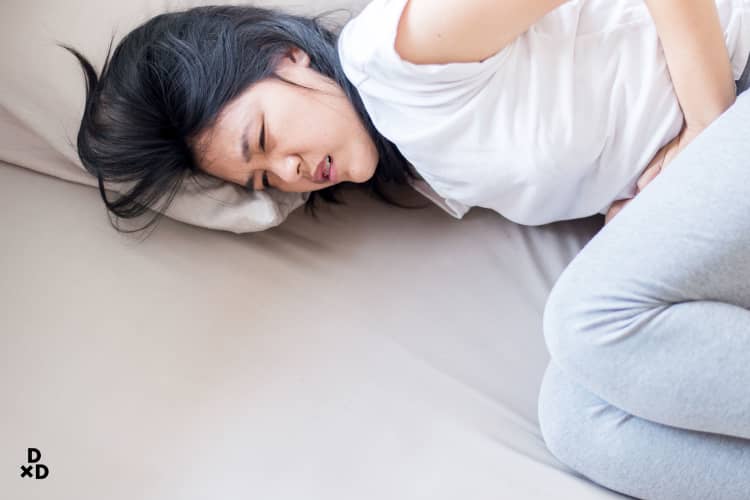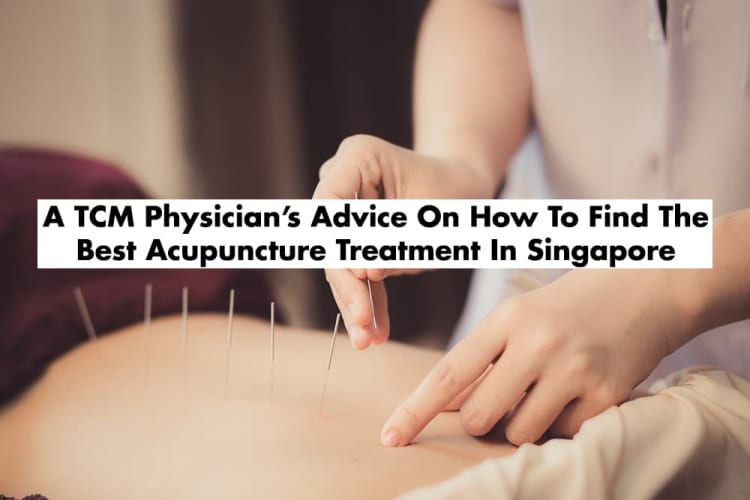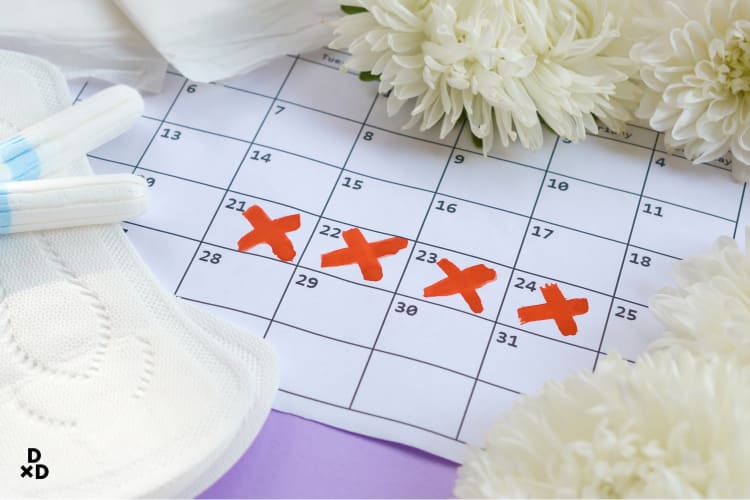What are period cramps?
Periods are part and parcel of being a woman, and something we usually have to go through every month. With this, also comes the occasional mood swings, or even the painful aches and cramps in our lower belly. Dysmenorrhea, more commonly known as period cramps, are painful sensations in the lower abdomen and/or lower back before and during your menstrual period [1].
These painful sensations can range from dull aches to extreme stabbing pain. Period cramps are considered common, with more than 80% of females experiencing painful cramps during their period [2]. Furthermore, up to 20% of women suffer from cramping severe enough to stop them from performing their daily activities [3]. That seems like a huge issue considering women get their periods every month.
What are the different types of period cramps?
There are two main types of period cramps: primary and secondary.
Primary dysmenorrhea
Primary dysmenorrhea usually refers to the common menstrual cramps women get every month and are not due to any other diseases [4]. The pain is usually located at the lower abdomen, back or thigh, and it can range from mild to severe. The pain lasts for 12-72 hours, and it can be accompanied by nausea, dizziness, fatigue or diarrhea.
These period cramps typically occur in teenage girls and younger women [5], and may stop as you grow older.
Secondary dysmenorrhea
Secondary dysmenorrhea is caused by other medical conditions, and can occur outside of your period. Secondary dysmenorrhea is usually more painful than primary dysmenorrhea, and can cause periods to be longer.
Medical conditions that can cause secondary dysmenorrhea include [4]:
- Endometriosis: a condition in which tissue lining the uterus (endometrium) is found outside the uterus
- Adenomyosis: a condition in which the lining of the uterus grows into the muscle of the uterus
- Pelvic Inflammatory Disease (PID): a bacterial infection that develops in the uterus and spreads to the other reproductive organs
- Cervical stenosis: a condition in which the cervix, or the opening of the uterus, narrows
- Fibroids: benign growths on the inside, outside or in the walls of the uterus
Read also: How do fibroids affect menstrual periods?
What are the symptoms of period cramps?
Symptoms of period cramps include: [4]
- Aching pain in the abdomen (which can range from mild to severe)
- Feeling of pressure in the abdomen
- Pain in hips, lower back and inner thighs
Period cramps can sometimes be accompanied by other symptoms such as dizziness, nausea, fatigue, bloating, headaches and diarrhea [6].
What causes period cramps?
Period cramps occur due to the contraction of the muscular walls of the uterus [7]. During your period, the walls contract vigorously to shed the uterine lining, compressing the blood vessels lining your uterus.
This causes the blood and oxygen supply to your uterus to be temporarily blocked, resulting in pain-triggering chemicals to be released. Prostaglandins, which further stimulates the contraction of the uterus, are also produced, hence intensifying the period cramps.

What are period cramps from a TCM perspective?
Traditional Chinese Medicine (TCM) is an ancient system of health which believes in achieving a balance between Yin and Yang (Yin referring to the “Cold”and “Matter or Physical” aspect and Yang referring to the “Warmth” or “Energy” aspect) to maintain health. It believes that illnesses strike due to an imbalance of Qi, or vital energy caused by changes in Yin and Yang.
Likewise, in TCM, period cramps are believed to be due to three causes: i) liver Qi stagnation, ii) cold accumulation and iii) Qi and blood deficiency. [8]
Liver Qi stagnation
Liver Qi stagnation can cause distending pain in the lower abdomen, which can spread to the waist and back. Qi stagnation is caused by blood stasis (when blood flow slows and coagulates), and is often observed as the sharp stabbing pain that ladies suffering from period cramps may observe.
The stabbing period cramps are usually relieved by the release of small blood clots during your menstrual cycle.
Cold accumulation
Cold accumulation is often caused by the overconsumption of cold foods and drinks [9], obstructing the Qi flow to the uterus. Cold accumulation results in blood stasis which causes the sharp stabbing pain. Cold accumulation also enhances contraction of the uterine muscles, which contributes to the pain.
Qi and blood deficiency
Ladies who have a weaker constitution (people who are more prone to getting sick), had a major illness or loss of blood would suffer from a deficiency of Qi, blood and kidney essence which are all important in supplying nutrients to the uterus. This will lead to the dull aching pain that occurs before or during your period [8].
Chinese medicine vs Western medicine on period cramps
Western medicine typically focuses on treating the symptoms of period cramps, hence your doctor may prescribe medications such as nonsteroidal anti-inflammatory drugs or oral contraceptives to help relieve your period cramps [10].
On the other hand, TCM focuses on treating the cause of period cramps, hence you will observe that TCM treatment methods usually focus on liver Qi stagnation, cold accumulation as well as Qi and blood deficiency.
As such, TCM treats period cramps by focusing on returning Qi and blood flow to the body [11], which is shown to reduce the intensity and duration of period cramps by up to 50% when acupuncture is performed [12].
Read also: How to relieve menstrual cramps quickly?
What TCM treatments help with period cramps?
There are many TCM treatments available to help alleviate your period cramps, such as moxibustion, acupuncture, as well as herbal medicine.
Moxibustion
A historical method for treatment of period cramps, moxibustion is a therapy that burns moxa (or mugwort root), which is made from a herb known as Artemisia vulgaris.
Moxibustion helps in warming and invigorating the blood, stimulating the Qi flow, strengthening the kidney Yang, dispelling cold and dissolving stagnation, which helps greatly in reducing period cramps [13].
Acupuncture

Acupuncture is a treatment method whereby thin needles are inserted into specific regions of your body known as acupoints. It aims to rebalance the Qi in a person’s body.
Doing acupuncture can regulate your menstrual cycles and prevent cramps by allowing the blood and Qi to flow properly. [14]
Also read: The Complete Guide to Acupuncture in Singapore (2021)
Herbal medicine

Apart from massages and acupunctures, TCM also uses chinese herbs to help improve the Qi and blood flow in your body, which can help with period cramps. These herbs can be incorporated into teas or soups.
Some of the herbs you can consume to help with your period cramps include [15]:
- Ginger: used to warm and expel cold in the body
- Angelica sinensis (Dang Gui): considered as blood mover and blood nourisher which helps in circulating blood flow around the body and prevents blood stagnation
- Safflower: increases blood circulation and clears blood blockages in reproductive organs
- Sichuan Lovage Rhizome (Chuan Xiong): helps in blood flow and circulation in the body
- Fennel: considered a warming herb which can help relieve pain caused by “coldness” in the body
What pressure points can relieve period cramps?
Apart from visiting a TCM practitioner, you can also massage yourself to relieve your period cramps. Locate the acupoints and you can massage the acupoints for 60-90 seconds.
Here are 3 acupoints that can help relieve your period cramps [16]:
- Large Intestine 4 is the tender spot located between your thumb and index finger. It helps to relieve pain.
- Liver 3 is in the tender webbing between the knuckles of the big and second toe. It helps to move stagnant Qi.
- Spleen 6 is located on the inside of your leg just above your ankles. It helps to relieve period cramps. [17]

What can I expect during TCM treatment for period cramps?
For your first TCM treatment, your TCM practitioner will assess you and your body health before creating a comprehensive treatment plan for you based on your diagnosis. It would also be helpful if you have kept a log of your previous menstrual cycles so your TCM practitioner could factor that into his/her treatment plan for you [18].
The most common TCM treatment to help improve period cramps is acupuncture. The TCM practitioner will insert thin needles into acupuncture points to help improve circulation of blood and relieve pain. The most common acupoint used is Spleen 6 [19].
Another popular TCM treatment to help with period cramps is moxibustion. Moxa, in the form of cigar sticks, will be lighted and placed about 3 cm above acupoints to allow the heat to enter and circulate the body [20].
Also read: The Complete Guide to Seeing a Traditional Chinese Medicine (TCM) Physician in Singapore (2021)
How many sessions are recommended?
Acupuncture treatment typically starts 5-7 days prior to the start of your menstrual cycle. Depending on your condition, your treatment will last 2-4 months [21]. Each treatment will last approximately 20-30 minutes. Weekly acupuncture treatments are also recommended to maintain regular menstrual cycles [22].
One course of moxibustion treatment usually comprises about 12 sessions, each lasting about 20-30 minutes long [23].
When should I go to a practitioner for period cramps?
You should visit a practitioner for your period cramps when your cramps are so severe that it disrupts your daily activities, or if it occurs outside of your period. This could be due to underlying problems such as endometriosis and fibroids, which may affect your fertility [24]. As such, it is important to seek medical help before it worsens.
Also read: The Ultimate Guide to Traditional Chinese Medicine (TCM) Fertility Treatments in Singapore (2021)
Even if your period cramps are not severe, you can still visit a practitioner who will be able to offer a treatment plan to help alleviate your period cramps. Women who do not suffer from severe period cramps can also visit a practitioner to maintain regular menstrual cycle and improve their blood and Qi circulation.
Read also: When should I seek help for period pain?
What can I not do after TCM treatment for period cramps?
After TCM treatment for period cramps, it is highly recommended to rest and drink plenty of water.
Things you should not do include [25]:
- Taking part in strenuous activities or exercise
- Smoking or drinking alcohol
- Drinking or eating cold foods and drinks
- Taking a shower 12 hours after moxibustion treatment [26]
- Direct contact with wind from air-conditioning or the fan after moxibustion treatment
What are the costs of TCM treatments for period cramps?
The costs of TCM treatments for period cramps differ depending on what type of treatment you are going for.
For acupuncture treatment, it ranges from $50-$75 for one session, depending on the clinic that you visit [27]. For moxibustion treatment, it can range from $60-$80 per session, depending on the clinic that you visit.
Unfortunately, outpatient TCM treatments are not covered under Medisave. However, your health insurance may have coverage for TCM so be sure to check with your insurance provider before you go for your TCM treatment sessions. Alternatively, you may also check with the clinic directly if they offer any subsidies.
What tips does TCM have for period cramps?
In case you are wondering what you could do to make your time of the month a little easier, here are some nifty tips from TCM to help soothe your period cramps [28]:
- Avoid consuming cold and raw foods such as ice cream and sushi, as they are overly yin in nature
- Eat grains, cereals and tubers such as brown rice, whole wheat bread and potatoes, as they can help strengthen your body’s blood and qi production
- Consume TCM herbs such as ginger and safflower
- Keep your belly and feet warm to prevent the cold from entering your body
What are the side effects of TCM for period cramps?
The common side effects for acupuncture treatment for period cramps include [29]:
- Bleeding, soreness or bruising at the facupuncture site
- Dizziness
- Fainting
The common side effects for moxibustion treatment for period cramps include [30]:
- Mild skin reactions
- Dermatitis
- Localised pain or bruising
These side effects usually subside by itself after a few days. However, if the side effects are getting worse, please visit your practitioner immediately.
Summary
Although period cramps are usually non life-threatening, it can be a huge hassle depending on the severity of the pain and affect quality of life. Additionally, certain underlying conditions causing severe period cramps may result in fertility problems if left untreated. As such, it is important to seek help promptly if you experience period cramps.
You can read more about the topic of Traditional Chinese Medicine (TCM) and gynaecology here. We have a wide variety of articles and questions which will be helpful to you.








